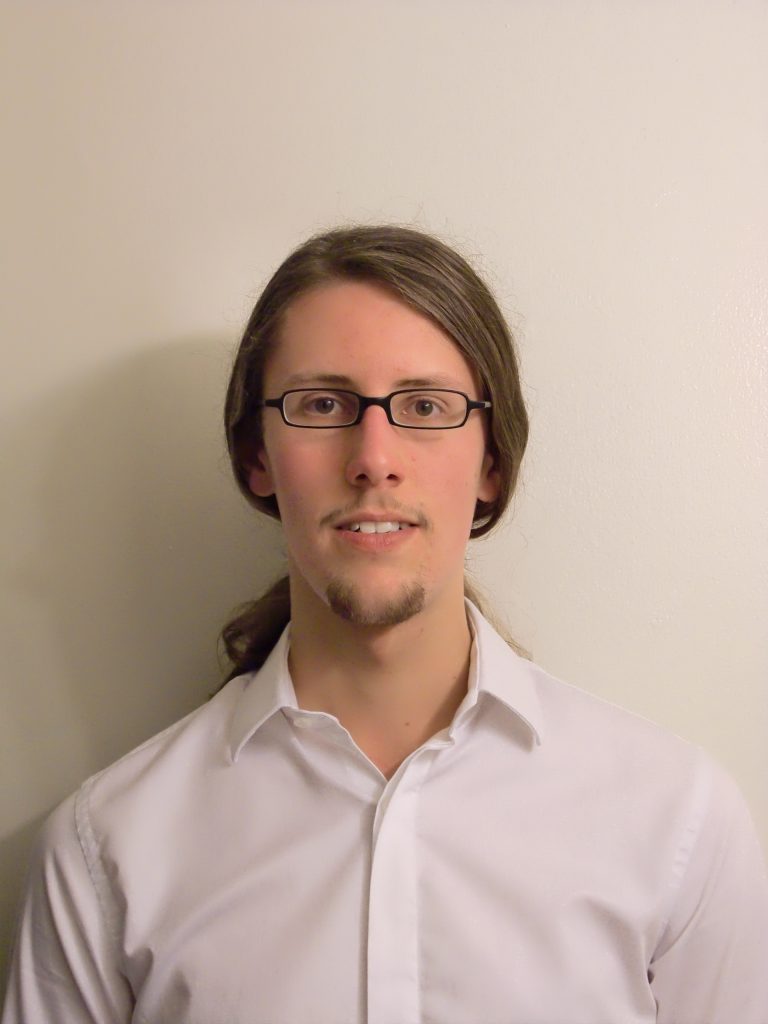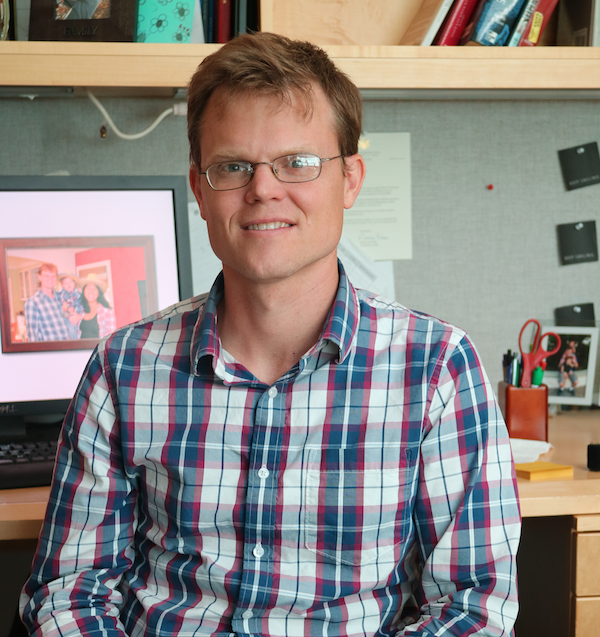

By Holden Wu
For this month’s MRM Highlights (MRMH), we were pleased to talk with Tanguy Boucneau and Peder Larson to learn more about their recent paper, “In vivo characterization of brain ultrashort‐T2 components.”
MRMH: First of all, could you tell us a little about yourselves and how you came to be doing MRI research at UCSF?
Tanguy: I am a French PhD student about to start my third year. Three years ago I was given the fantastic opportunity of working with Peder at UCSF for a year. I am now back in France where I am still working in MRI, in the area of lung imaging.
Peder: I got into MRI research because my undergraduate advisor at Stanford was Dwight Nishimura. I liked the guy, and also what he was doing. It was very clear to me, even then, that MRI was one of the most interesting things going on. One of my first memories in the field is of Krishna Nayak showing some real-time cardiac imaging and flow. That blew my mind.
MRMH: Could you summarize your paper briefly, and tell us what prompted it?

Peder: The seeds for this particular paper were planted around 2004, during one of my first years in graduate school. The first bigger project I worked on was designing long-T2 suppression pulses and applying them in the brain. You could see something there and it looked like myelin, but that’s as far as I got in grad school. So I always had this idea in the back of my mind, and I wanted to come back to it.
Tanguy: The main goal was to characterize and image the myelin in cerebral white matter. Myelin has a very short T2* value, and can’t be seen using traditional MRI pulse sequences. The only way of seeing it is either with long-T2 suppression pulses, or with very special pulse sequences, such as ultrashort echo time (UTE) MRI. For this project we went with UTE, using a high number of TE values (32) ranging from 50 μs to 5 ms. Since there exists a pool of long T2* components and a smaller pool of short T2* components with a chemical shift, these data can be fitted using a two-component model. We used the second pool to represent myelin.
Peder: That’s a great summary. Previous research seemed to suggest that the ultrashort T2 or T2* component was not coming from myelin water, but from protons in the phospholipid membranes. We decided to step back from designing RF pulses, and first learn as much as possible about the MR characteristics of the ultrashort components in the brain, in the hope this might provide a foundation for developing other imaging techniques. Given that we are talking about methylene protons in the phospholipid membranes, it is, in retrospect, obvious that there is a large chemical shift. But demonstrating this was both a big challenge and a big result from the paper.
MRMH: Could you help us put this paper’s in vivo findings into context? How do they relate to previous ex vivo work?
Tanguy: Previous ex vivo experiments showed a chemical shift very close to that of lipids. The first time we saw these oscillations in our signal curves we were very encouraged. The T2* values we measured in vivo were different from the findings of previous ex vivo studies of tissue extracts, which were in a different state.
Peder: Everything was reasonably consistent between this work and prior work. There were some differences, such as a large drop in T2* from 500 μs at 3T to 200 μs at 7T, which is at the limit of what is measurable. Some of the ex vivo work was done at even higher field strengths, sometimes leading to the conclusion that it would be impractical to pursue this type of measurement in vivo. Our present results are more optimistic.
MRMH: What do you see as the advantages and challenges of UTE myelin imaging at 3T vs 7T?
Tanguy: It was difficult to work on 7T, not only because of short T2* and B1 inhomogeneity, but also because of the specific absorption rate (SAR). In UTE we use very short TRs, and therefore repeat RF pulses very often. There were trade-offs between 3D image quality, shortening the sequence scan time, and not burning the subject.
Peder: I’d say that any advantage of 7T, due to the increased polarization, is probably offset by the decreased T2*, the other technical challenges, and the limited availability of 7T scanners. 3T is now the direction I’m pushing for, primarily due to the longer T2* and chemical shift considerations.

MRMH: What were the most exciting parts of working on this project?
Tanguy: Tuning the sequence. It was like a game, you tune one parameter to reduce scan time, but that increases SAR. I think in the end we were able to achieve a good balance.
Peder: The final sequence with this random encoding doesn’t have any tonality to it. It’s like listening to a blender for an hour! So we are really grateful to all of our volunteers.
MRMH: So where do you, and the project, go from here?
Tanguy: Maybe optimizing the pulse sequence. I think we’ve reached a milestone, we have a good sequence right now. Another possibility is to improve the reconstruction. When I was at UCSF we were not using parallel imaging, but Peng Cao in Peder’s group implemented this for the final results.
Peder: And also comparing with other neuroimaging modalities and measures of myelination and brain connectivity. Another important direction would be to study diseases with demyelination.
Tanguy: This was actually my very first project in MRI and it made me want to continue working in MRI research. In my current lab in France I am still using many of the things I learned at UCSF.
Peder: This was a project with a lot of unforeseen obstacles. It provided a good reminder not be afraid to tackle difficult problems, to expect to encounter unforeseen difficulties, and to be persistent. I hope it inspires more people to look into the characterization of myelin.




